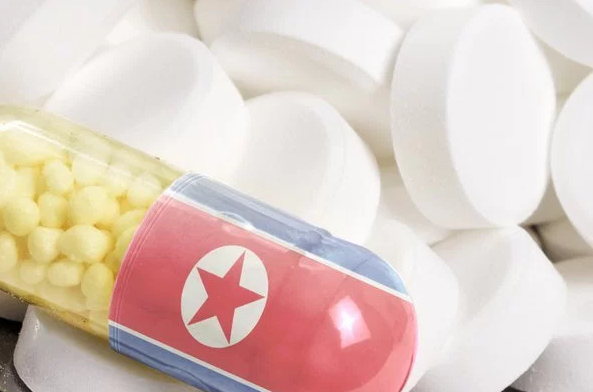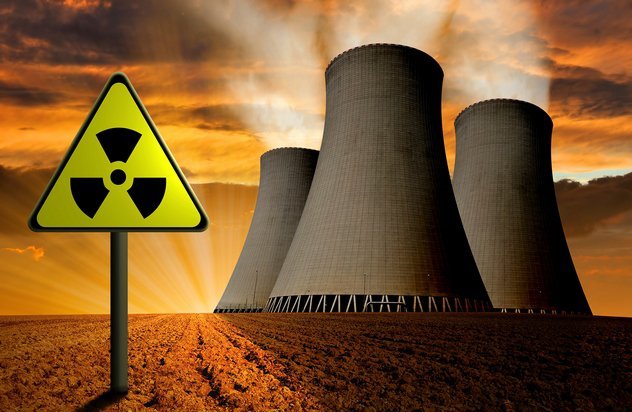(单词翻译:单击)
3.Foreign Labor
3.海外劳工
If North Korea has anything in abundance, it's people. And how can this commodity be monetized? By sending them overseas to work and send their earnings back to North Korea, holding their families hostage to ensure compliance.
如果说朝鲜还有什么是充足的,那就是人口了。那怎么利用劳工来获利?朝鲜把这些劳工输送到海外去打工赚钱,再把他们的收入吸收回国内,同时挟持他们的家人作人质来迫使劳工们服从。
Over 50,000 North Korean laborers toil overseas for the regime, sending back remittances totaling nearly $2 billion a year.
超过5万名朝鲜劳工为国家辛苦跋涉至海外工作,他们每年寄回的汇款总额约达20亿美元。

The laborers work in terrible conditions for long hours and are lucky to see even 10 percent of their paycheck.
这些劳工们在恶劣的条件下长时间工作,运气好时自己也能仅能拿到10%的收入。
North Korean laborers can be found in more than 40 different countries in the Middle East, Africa, and even Europe—but mostly in China and Russia, with 20,000 and 19,000 workers, respectively.
朝鲜劳工散落在中东、美洲以及欧洲等地的40多个国家,但主要集中在中俄两国,其中,中国约有朝鲜劳工2万人次,俄罗斯约有1.9万人次。
Most are employed in industries requiring hard physical labor, like construction. And with the United Nations cracking down on other North Korean cash flows, the country has been increasing the number of laborers sent overseas to make up for the shortfall in cash it earns from other activities.
他们大多从事建筑业等重体力劳动行业。并且随着联合国打击朝鲜其他违法交易力度的加大,朝鲜在这些活动中所得收益减少,只能输出越来越多的海外劳工来弥补这一现金缺口。
2.Methamphetamines
2.冰毒
North Korea has been involved in the drug trade since the 1970s, when it defaulted on its international debts and ordered its embassies to self-fund.
上世纪70年代,朝鲜严重拖欠国际债务并令其大使馆自筹经费,那时起朝鲜就一直参与毒品贸易。
One of the ways the embassies initially accomplished this was to traffic drugs using diplomatic immunity.
朝鲜大使馆最初筹资的方式之一就是利用其外交豁免权贩运毒品。

Later, North Korea started manufacturing illicit drugs of its own—primarily methamphetamine—and exporting some of them through its embassies.
而后朝鲜干脆在其国内制造以冰毒为主的毒品,并通过其大使馆出口到各国。
North Korean methamphetamine gained notoriety primarily for its high purity (99 percent), which is not surprising considering the drugs were manufactured in state-owned factories under the supervision of professional chemists.
朝鲜制造的冰毒因纯度高(99%)而声名远扬,不过想想这些冰毒是在专业药剂师监管下由国有工厂制造的,一切便也不足为奇了。
However, since the mid-2000s, illicit drug activity appears to have been "privatized,"with the state apparently taking a smaller role in manufacturing, transportation, and distribution of methamphetamine.
但到了2005年左右,随着朝鲜在制造、运输、分销冰毒中所起的作用越来越小,毒品交易显现出"私有化”趋势。
The purity has decreased dramatically, indicating that production may no longer be taking place in state-owned factories. However, methamphetamine is still plentiful in North Korea itself, where it is reported that meth is offered "as casually as tea."
冰毒纯度明显下降,这表明朝鲜的国有工厂或许已经不再生产毒品,但据悉其国内,冰毒依然泛滥,人们购买冰毒就像购买茶叶一样随意。
In a country where food is scarce and famine stalks the land, the appetite-suppressing properties of methamphetamines are very useful.
在这样一个食物紧缺、饥馑遍地的国家,冰毒能抑制食欲的特性还是大有用武之地的。
1.Nuclear Reactors
1.核反应堆

Probably the most audacious North Korean export has been an attempt to build a fully functioning nuclear reactor for Syria at Al-Kibar, which Israel bombed in 2007. North Korea patterned the reactor on its own gas-graphite one.
或许在朝鲜的所有出口贸易中,最拉风的就是试图为叙利亚在艾其巴建立一个全功能的核反应堆。朝鲜效仿气冷石墨反应堆来建造这一核设施,
As this type of reactor is not very complex, North Korea could have and probably did supply most of the parts itself.
由于这种反应堆并不算复杂,朝鲜可以独立完成绝大部分的工程。
The North Koreans apparently modeled the building almost exactly on the Yongbyon reactor, later constructing outer walls to hide the shape of the facility, turning it into a featureless box.
这一核设备几乎完全参照宁边反应堆来建造,核心部分建好以后再建造厚厚的外墙来隐匿身形,最后整个反应堆就变成了平淡无奇巨无霸盒子。
If the reactor had not been bombed, it could have produced enough plutonium for one or two weapons per year once it was operational.
如果艾其巴核设施没有被炸毁,它一旦开始运作,每年产出的钚足以制造一两枚核武器。
Just three days before the reactor was bombed, a North Korean ship was caught delivering nuclear fuel rods, most likely destined for the reactor. And the whole thing ended up netting up to $2 billion for North Korea, with the money coming from Iran.
在这核设施被炸毁的三天前,一艘运输核燃料棒的朝鲜船舶被拦截,这些核燃料棒很可能就是准备用于这一核反应堆。这整起事件疑云重重,最后却以朝鲜赚了伊朗20亿美元告终。


